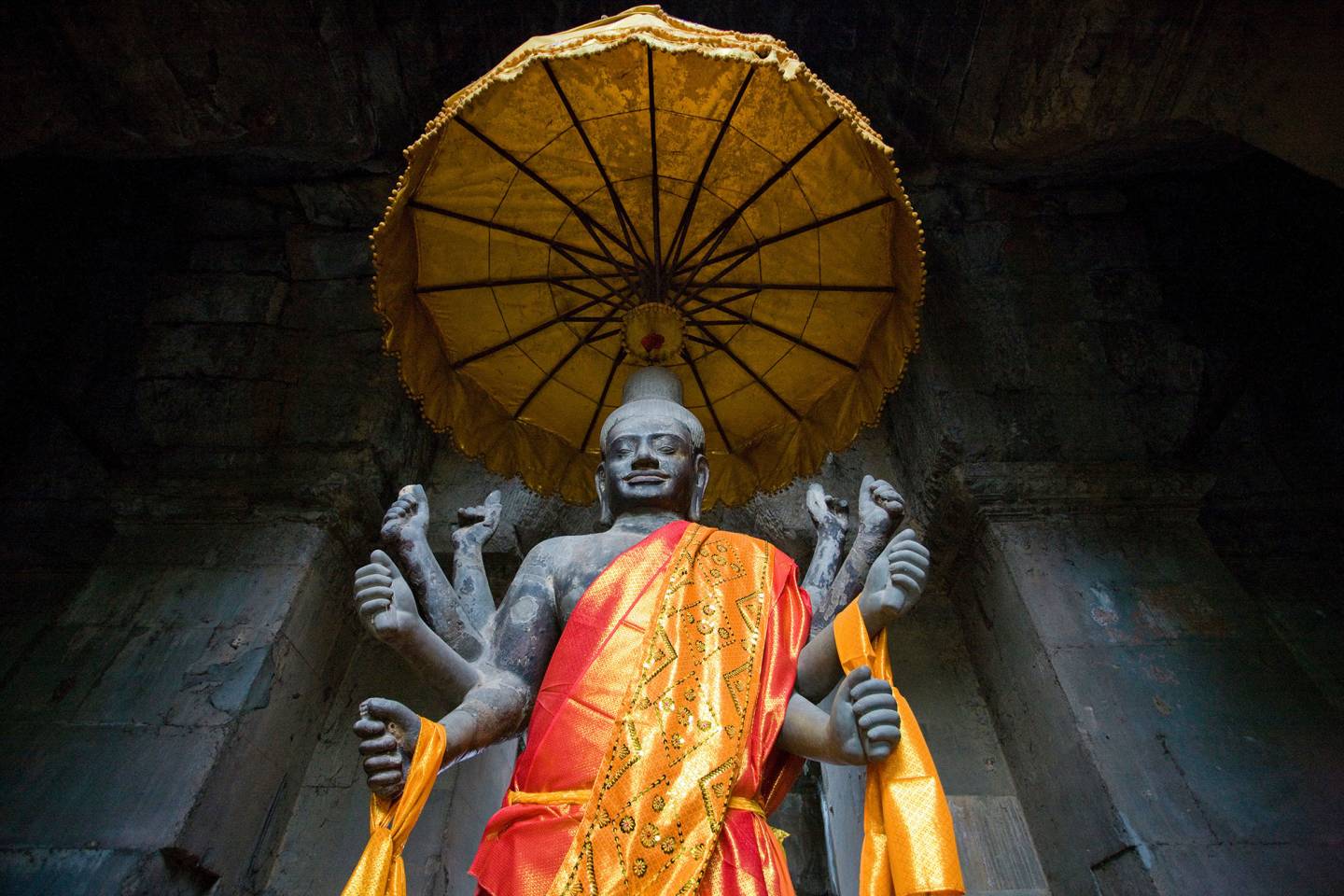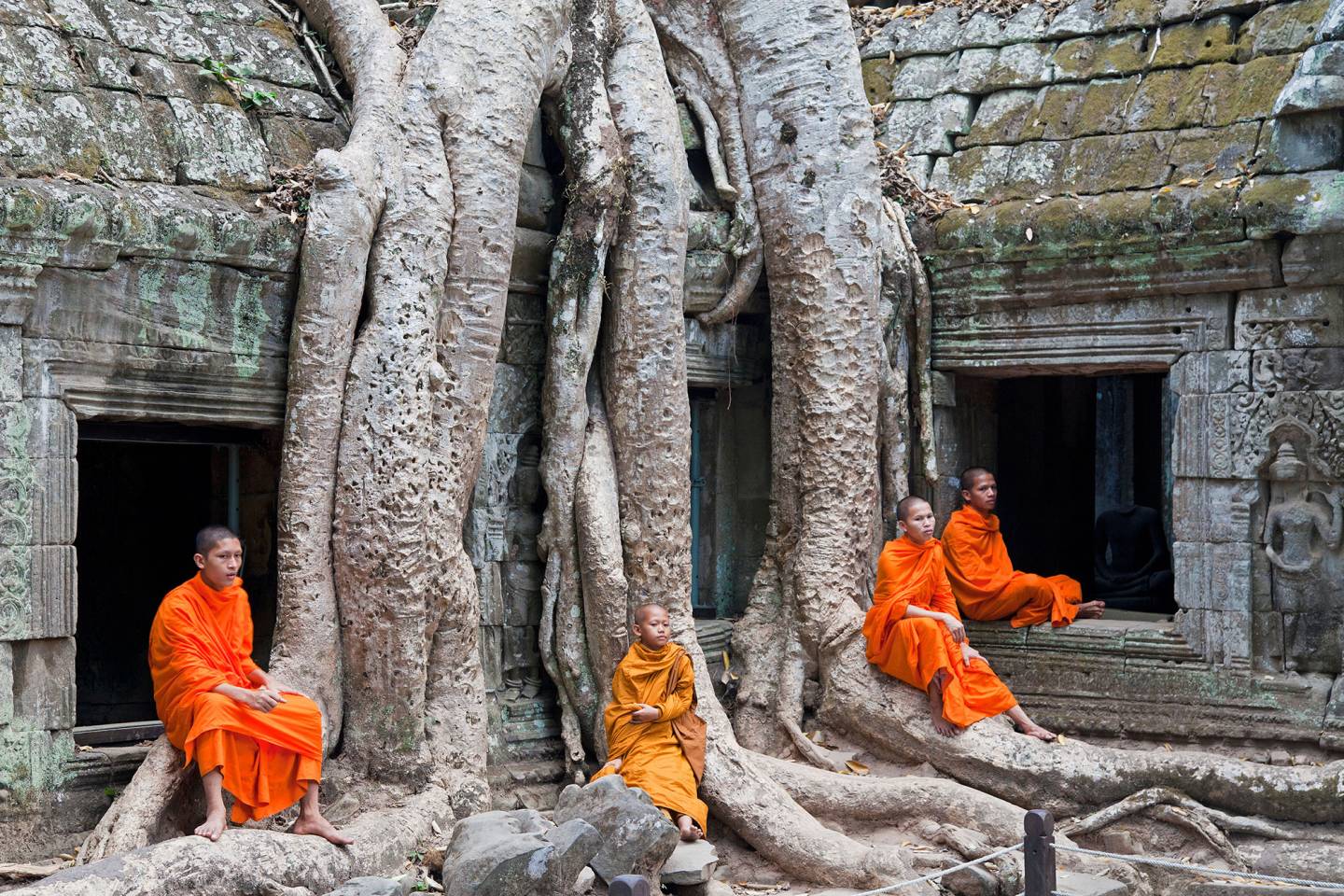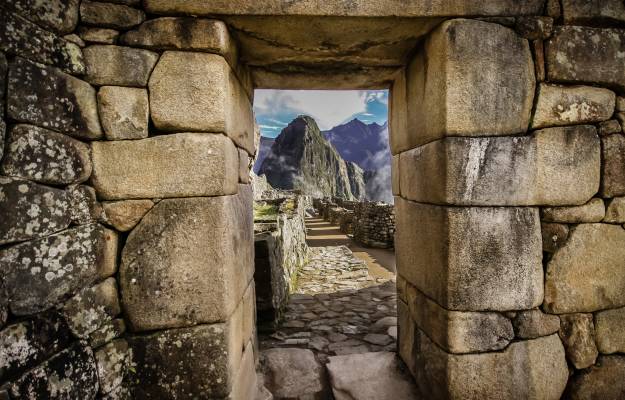
Spotlight on Angkor Wat
Considered by many to be the pinnacle of Khmer architecture, Angkor Wat is a featured destination on many of our Around the World luxury jet expeditions.

The sun rises behind the grand domes of Angkor Wat. Tall palms stretch up toward the lightening sky, while drifting clouds are reflected in the temple’s moat. You linger for a moment before traversing the royal causeway on your way to the inner areas of one of the world’s largest religious structures.
Built in the 12th century by King Suryavarman II, Angkor Wat is considered by many to be the pinnacle of Khmer architecture. When French naturalist and explorer Henri Mouhot visited the temple in the mid-19th century, he rhapsodized about its elegance:
One of these temples — a rival to that of Solomon, and erected by some ancient Michelangelo — might take an honorable place beside our most beautiful buildings. It is grander than anything left to us by Greece or Rome…
Indeed, the exterior of Angkor Wat has become such a symbol of the country that it even appears on the Cambodian flag. However, what’s inside is equally spectacular. The Churning of the Sea of Milk gallery presents a bas-relief of one of the most famous sacred Hindu myths.
The story, in brief, goes as follows: Vishnu (who is closely associated in the carving with Angkor Wat’s architect, King Suryavarman II) convinces a gaggle of demons and gods to work together in an attempt to gain immortality. They wrap the great snake Vasuki around the base of Mount Mandara.
Then the demons stand on one side and the gods on the other in what looks like a giant game of tug of war. They take turns pulling, rotating the mountain and churning the ocean beneath it. This goes on for about a thousand years until finally amrita, the nectar of immortality, rises to the surface, at which point Vishnu quickly grabs it to prevent the demons from drinking it.
What’s so amazing is the level of detail that went into the carving, which is set in a colonnade so that you walk through it as though you were passing through the narrative itself. There are the shapes of fish and crocodiles spinning around in the great whirlpools created by the motion. Four-armed Vishnu brandishes weapons, seeming to entreat the armies of good and evil to pull ever harder. Just behind the fearsome god, another portrayal of Vishnu shows the deity as a giant tortoise that holds up Mount Mandara as it threatens to sink into the sea of milk. In the sky above, lovely apsaras (female spirits) dance in the wind.
The overall effect of the story is one of barely suppressed motion. As you walk along the corridor, you’ll feel the energy that makes this work of art just as vital as it was nearly a thousand years ago when it was carved.
But when you look closely, you’ll see that Mount Mandara wasn’t completed and there’s a blank space just to the right above Vishnu’s head. Some historians think that the carving may have been interrupted by King Suryavarman II’s death, which probably happened in a war with the neighboring kingdom of Champa (in what is now Vietnam) around 1150.
The figure at the top of the carving, directly above Vishnu, is Indra, god of the sky. He’s got his arm outstretched and hand open to grab something that’s not there. Perhaps that was where the artists were planning to place the elixir of immortality, the result of all this divine and infernal motion.
But they never got to finish their carving. As the sacred Hindu texts the Upanishads say, “All is change in the world of the senses.” A king dies in battle, a city falls to a conqueror and an empire enters a dark period. The world keeps turning. And despite the fact that the elixir of immortality still has not risen from the depths of the ocean, we can be grateful that this magnificent work of art has withstood the ravages of time.
Angkor Wat is a featured destination on many of our Around the World trips.





